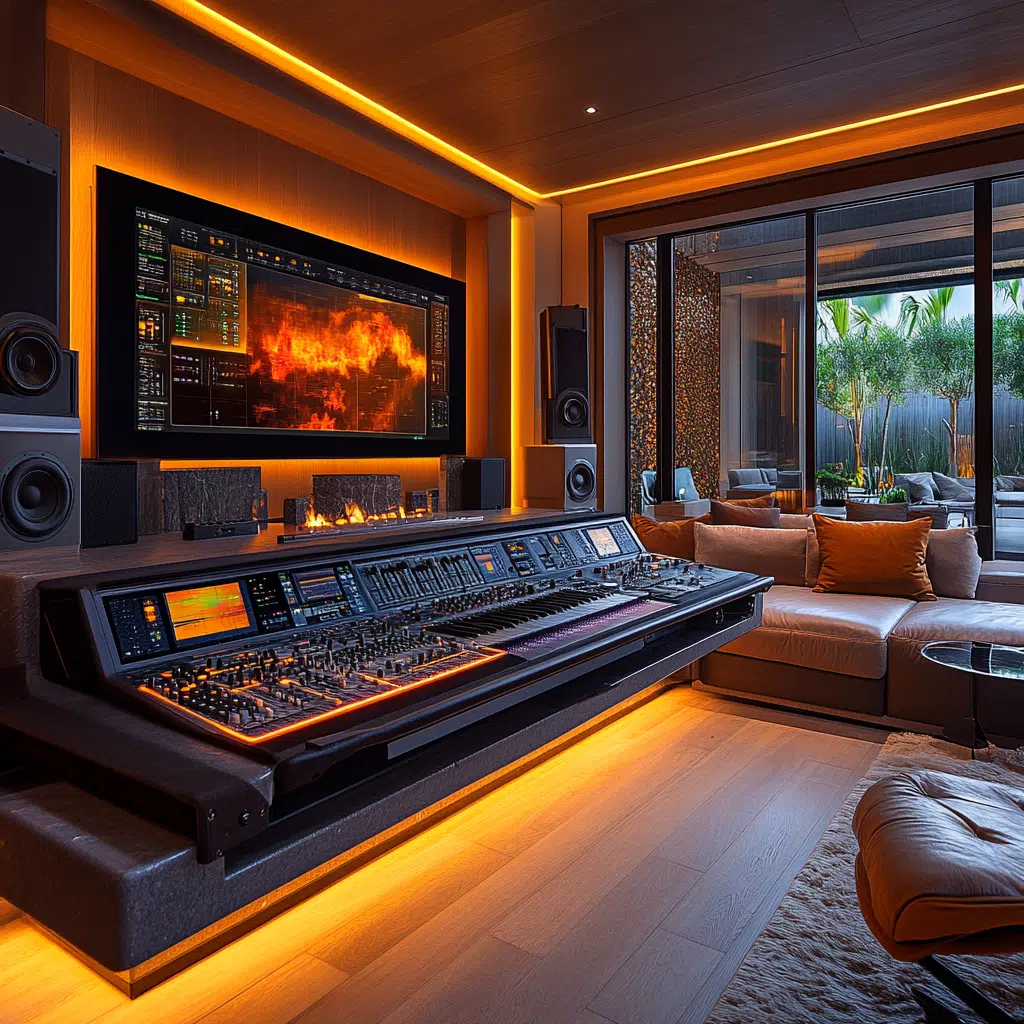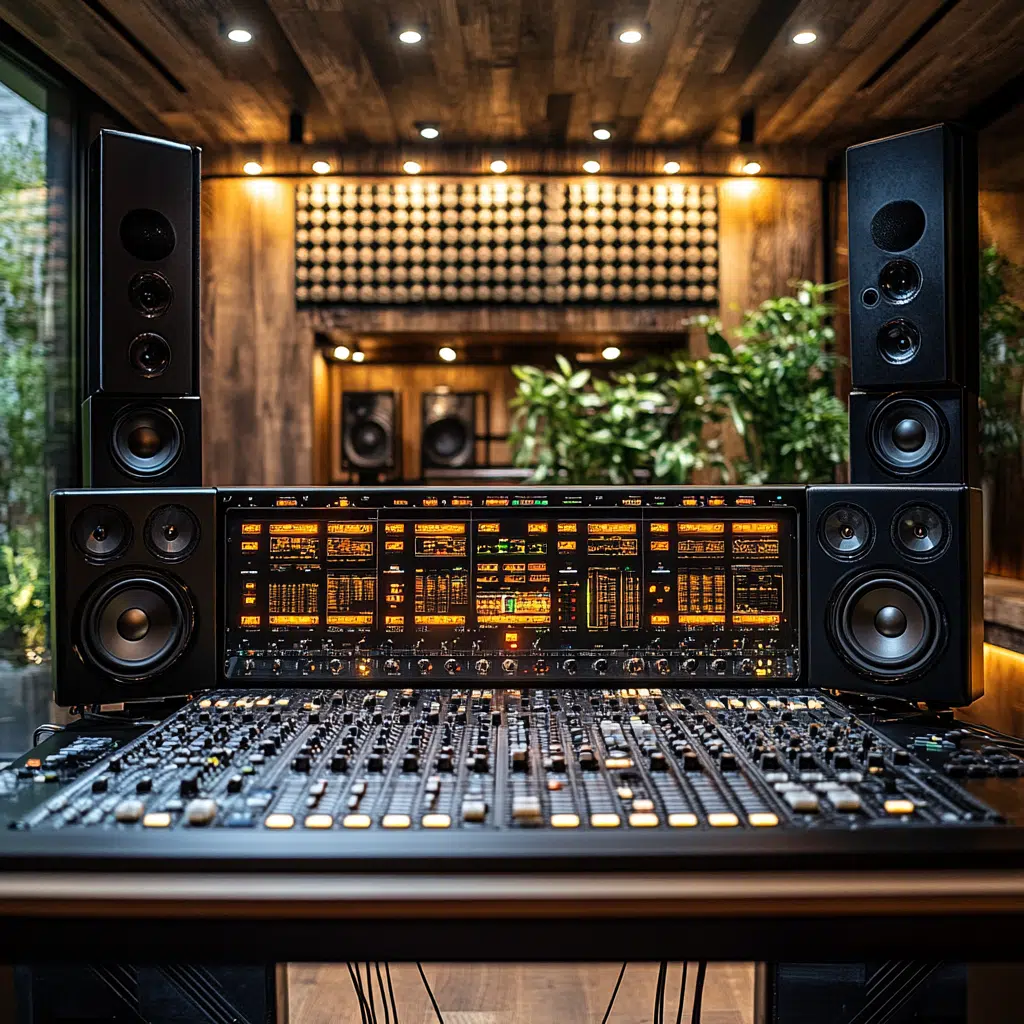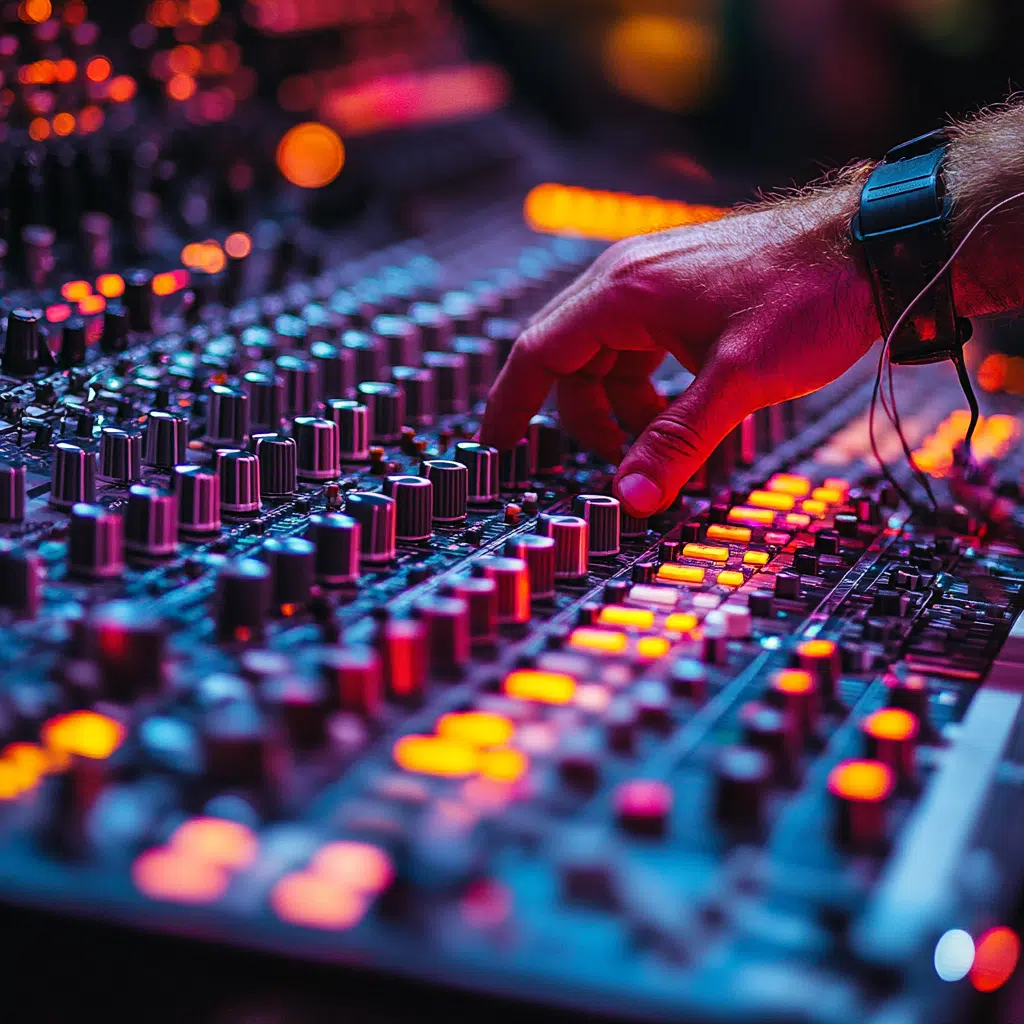Understanding the Essence of Dolby Atmos
Dolby Atmos represents a dramatic departure from traditional surround sound, offering a soundscape as vivid as life itself. It turns drab audio into a living, breathing aspect of storytelling. Unlike previous formats, Dolby Atmos enables sounds to move fluidly in a three-dimensional realm. Think of it as an artist adding layers and intensity to their palette. To achieve this, sounds are object-based, making them more distinct and offering more freedom in mixing. For filmmakers aiming to craft unforgettable auditory experiences, Dolby Atmos is indispensable. Much like how Temu clothing tailors unique pieces, Dolby Atmos tailors sound with precision, adding depth to every scene.
The Role of Remote Mixing in Modern Productions
With the rise of remote work, Remote Mixing Dolby Atmos has become integral to production houses. This method bridges geographical divides, allowing sound engineers and directors to collaborate effortlessly. Tools like Source-Connect and Avid Cloud Collaboration are utilized by industry giants like Formosa Group and Skywalker Sound. Through case studies, such as those from hotel Vouchers For homeless near me, it’s evident that remote mixing has democratized access to high-quality audio post-production, offering flexibility previously unheard of. These systems maintain rigorous standards while adapting to innovative workflows that cater to the fix And flip nature of modern film production.
| Aspect | Details |
| Overview | Dolby Atmos allows for three-dimensional sound placement and movement. |
| Sound Objects | Supports up to 128 individual sound objects in a mix. |
| Mixing Process | 1. Create a Dolby Atmos master track in DAW. 2. Create audio tracks/buses for sound objects. |
| Speaker Configuration | Minimum recommended: 7.1.4 setup (7 horizontal, 1 subwoofer, 4 overhead). |
| DAW Compatibility | Compatible with DAWs supporting Dolby Atmos production, like Avid Pro Tools, Steinberg Nuendo. |
| Remote Collaboration | Utilizes software and cloud-based solutions for remote mixing and client feedback. |
| Precision and Space | Offers precision placement and spatial freedom for immersive audio experiences. |
| Benefits | Enhanced immersion, flexibility in sound placement, and dynamic audio experience. |
| Entry Cost | Varies based on software (Pro Tools, Nuendo) and hardware (speaker configuration), typically ranging from moderate to high. |
Essential Tools and Technologies for Remote Mixing Dolby Atmos
Embracing Remote Mixing Dolby Atmos involves leveraging fully equipped digital workstations. This process is spearheaded with necessary tools such as Pro Tools Ultimate, the Dolby Atmos Production Suite, and the robust Trinnov Altitude for spatial calibration. These technologies empower sound engineers, ensuring that they can craft immersive soundscapes remotely, with quality intact. Like how a condo association ensures every aspect of a property meets standards, these tools ensure every sound object is flawlessly placed. With up to 128 sound objects in a mix, precision is paramount and keeps engineers at the cutting edge of audio innovation.
Comparing Remote Mixing Solutions: Insights from Top Studios
Exploring Remote Mixing Dolby Atmos solutions showcases varied approaches depending on production scale and needs. Sony Pictures Post Production Services and Technicolor Creative Studios employ different strategies in integrating remote workflows. Challenges such as latency and synchronization hurdles were confronted with meticulous planning, akin to how Ava Raine efficiently navigates her domain. Their insights reveal a pathway for aspiring audio professionals seeking reliable and adaptable mixing solutions, simplifying the remote process, and enhancing the auditory experience.
Practical Techniques: Crafting 3D Soundscapes Remotely
To craft 3D soundscapes, one must master both the technology and the artistry of sound placement. Remote mixing Dolby Atmos demands attention to detail, such as using height channels to create a truly immersive experience. Consider the strategic spatial layering evident in films like “Dune” and “Blade Runner 2049”. These productions illustrate how audio depth paints vivid cinematic footage. Understanding these techniques is key, whether you’re placing whispers directly beside the listener or relying on narrative context for sound immersion. As with any art, the technique marries seamlessly with technology for results that transport viewers beyond the screen.
Overcoming Challenges in Remote Mixing Environments
While promising, remote mixing poses hurdles like latency and consistency across varying setups. Addressing these requires skill and ingenuity. Engineers such as Scott Gershin and Anna Behlmer have successfully managed these challenges, offering insights into maintaining cohesion across different monitoring systems. By harnessing technology and expertise, they offer solutions to the common snags encountered in Remote Mixing Dolby Atmos environments, ensuring that high-quality standards are consistently maintained. This is akin to the delicate dance of tailoring a bespoke suit to fit different sizes flawlessly.
The Future of Remote Mixing in Dolby Atmos
Looking ahead, Remote Mixing Dolby Atmos will evolve further with advancements in virtual reality (VR) and augmented reality (AR) sound design. Emerging trends like binaural audio and Ambisonics are likely to reshape how we interact with audio. Visionaries like Hans Zimmer and Randy Thom predict a future where these technologies enhance our storytelling capabilities. The potential for greater innovation in sound is akin to new architectural styles reshaping urban landscapes, demanding creativity and vision in its application. As VR and AR gain traction in cinematic narratives, the possibilities are boundless.
Crafting the Future of Sound with Remote Mixing
The captivating intersection of technology and creativity in Remote Mixing Dolby Atmos heralds a new age for sound design. This dynamic merger elevates storytelling, enhancing every narrative moment. Like how a well-told story captivates its audience, high-quality sound mixes open doorways to unparalleled cinematic experiences. As we journey into this new era, the magic of sound becomes accessible to all creators, promising transformative storytelling on a global scale. The challenge lies in harnessing these tools fearlessly, exploring the bounds of auditory imagination, and continuing to redefine the standards of cinematic excellence.
Remote Mixing Dolby Atmos: Craft 3D Soundscapes
Welcome to the astonishing universe of Remote Mixing Dolby Atmos, where the power of sound transforms your audio visuals. Envision yourself at the helm of an orchestra, conducting a symphony that envelops the audience from all angles. That’s the magic of Dolby Atmos. But did you know that some industry pros have orchestrated entire soundscapes from their cozy home studios with services like Remote Sound mixing Services? With a good setup, audio engineers can fine-tune mixes with the same precision they would in a traditional studio setting, all from the comfort of their digital workspaces. This burgeoning trend isn’t just a matter of convenience—it’s reshaping the audio landscape.
3D Sound: Beyond Just Stereo
Think those headphones on your desk are only good for stereo? Think again! With advancements in Dolby Atmos technology, headphones are now capable of simulating a 3D sound environment that could rival a full-scale cinema. Fascinating, right? And here’s an intriguing tidbit: the early concepts for 3D sound were initially experimented with in gaming before they made a splash in movie audio. Gamers wanted sound that helped them discern direction, and now film fans benefit from these innovations, too. Additionally, remotely collaborating on projects allows sound artists to share those immersive experiences across the globe without missing a beat.
Remote Mixing in Action
In an exciting twist, Remote Mixing Dolby Atmos has made collaboration so flexible that producers are even scheduling live mixing sessions across multiple time zones. Gone are the days of tedious travel plans just to be part of a mixing session. Producers can jump into a virtual studio space as simply as joining a video call. One fun fact that might surprise you is that, during the production of some recent blockbusters, post-production teams, spread around various continents, successfully completed audio mixing within a matter of days. This speed and efficiency are parts of the puzzle that make remote mixing a preferred choice for many.
As Remote Mixing Dolby Atmos continues to grow, it’ll be thrilling to see how this technology further pushes the boundaries of what’s possible in audio. Here’s to the future of sound and the shared auditory experiences that connect us all!
Is Dolby Atmos good for mixing?
Dolby Atmos is fantastic for mixing because it lets you play with sound in three dimensions, surrounding the listener on all sides. This gives you way more control and flexibility, allowing for a more immersive experience.
How to mix on Dolby Atmos?
To mix in Dolby Atmos, start by creating a Dolby Atmos master track in your DAW. Then, set up audio tracks or buses for each sound object you want to place in the 3D space. You can manage up to 128 sound objects, giving you lots of creative room.
How to make Dolby Atmos sound better?
Enhancing Dolby Atmos sound involves careful placement and movement of sound objects in the 3D space provided. Precision in object positioning and utilizing the full range of overhead speakers can significantly enhance the immersive experience.
What speaker placement for Dolby Atmos mixing?
For Dolby Atmos mixing, it’s crucial to have proper speaker placement. The recommended configuration includes seven speakers on the horizontal plane at head height, a subwoofer, and four overhead speakers.
How many speakers do I need for Dolby Atmos mixing?
You’ll need a minimum of 7.1.4 speakers for Dolby Atmos mixing, which means seven speakers around the room, one subwoofer, and four overhead speakers.
What is the disadvantage of Dolby Atmos?
One disadvantage of Dolby Atmos is that it can be costly to set up because it requires additional speakers and compatible equipment. In some cases, it may not be fully supported by all playback systems, which can limit usability.
Do Atmos mixes get mastered?
Yes, Atmos mixes do get mastered, just like any other audio mix. Mastering helps polish and balance the mix to ensure it sounds great across different playback systems.
How much does Dolby Atmos mixing cost?
The cost of Dolby Atmos mixing can vary widely depending on the complexity of the project and the studio rates. It’s best to contact a professional mixing engineer to get an accurate quote for your specific needs.
What is the best audio connection for Dolby Atmos?
For the best audio connection when using Dolby Atmos, HDMI is often the preferred choice because it can carry high-resolution audio along with video, ensuring the best possible transmission quality.
Which sound mode is best for Dolby Atmos?
The best sound mode for Dolby Atmos is the “Dolby Atmos” mode itself. This mode is specifically designed to take full advantage of the Dolby Atmos technology to deliver an immersive sound experience.
Is anything better than Dolby Atmos?
While Dolby Atmos offers an exceptional surround experience, some might argue that other systems, like Auro-3D, offer different immersive qualities. However, it ultimately depends on personal preference and the specific setup.
What makes Dolby Atmos sound better?
Dolby Atmos sounds better because it lets you move sound freely within a 3D space, allowing you to create a more engaging and lifelike audio experience. This flexibility in sound placement is what sets it apart from standard surround systems.
Can you mix in Dolby Atmos?
Yes, you can mix in Dolby Atmos, and it’s a creative process that involves placing sounds in distinct 3D positions around the listener to create an immersive soundscape.
How high should speakers be for Dolby Atmos setup?
For a Dolby Atmos setup, the overhead speakers should be mounted or positioned ideally at a height that complements the 7.1 ground-level configuration for balance. The idea is for sound to come from above without overpowering the rest.
What are the standards for Dolby Atmos mixing?
The standards for Dolby Atmos mixing involve having an appropriate setup with at least a 7.1.4 speaker configuration. You’ll also need compatible software and hardware for mixing and monitoring in the Atmos format.
Does music sound better with Dolby Atmos?
Music can indeed sound better with Dolby Atmos, as the technology allows for a more immersive listening experience. This lets you feel enveloped by the sound, with elements placed all around you.
Do Atmos mixes get mastered?
Yes, mixes done in Dolby Atmos are typically mastered. Mastering ensures that all elements are balanced and the final product maintains its quality across various playback systems.
Does Dolby Atmos make a big difference?
Dolby Atmos makes a big difference by allowing sounds to be precisely placed in a three-dimensional space. This enhances the realism and immersiveness of the audio experience, making it feel as if you’re right in the middle of the action.
What are the standards for Dolby Atmos mixing?
Standards for Dolby Atmos mixing benchmark the minimum requirement of a 7.1.4 speaker setup, with attention to proper calibration and speaker placement to fully utilize the technology’s potential.



